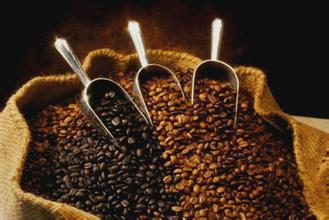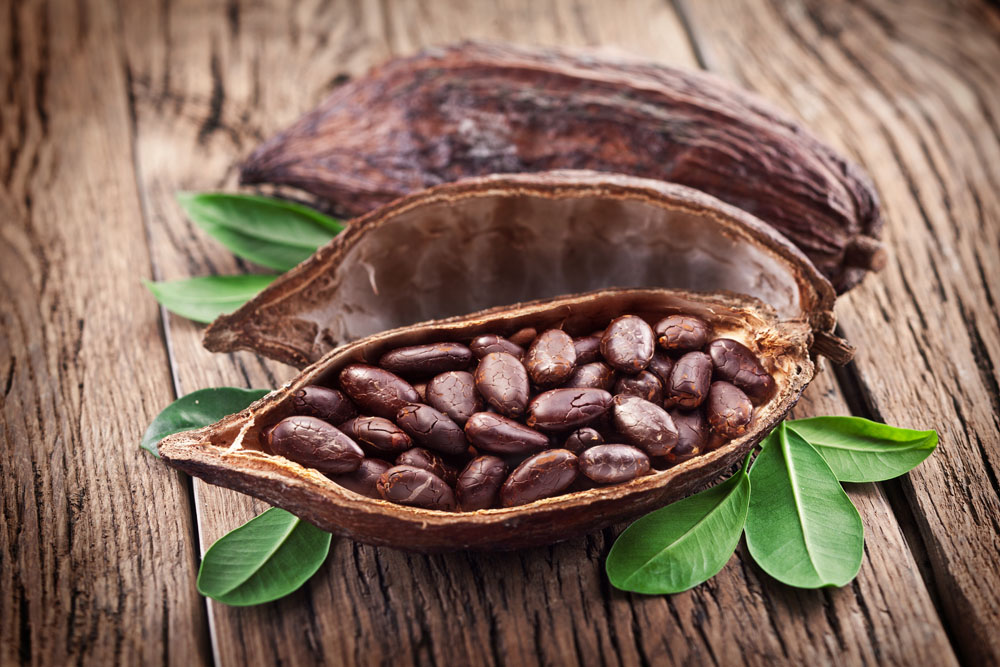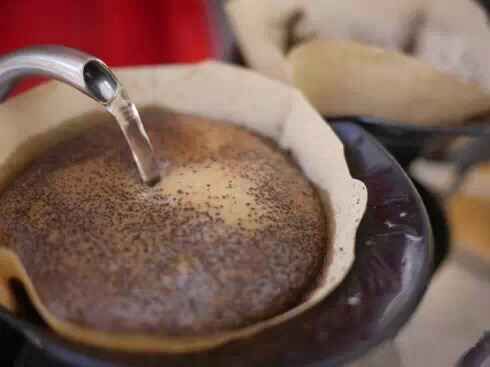The introduction and source of small coffee novice must see
Small grains of coffee
Scientific name: Coffea arabica
Family and genus: coffee genus of Rubiaceae
Morphological features: small trees or large shrubs, plant height 5-8 meters. Base usually much branched, old branches gray-white. Nodes inflated, young branches glabrous. Leaves thinly leathery-ovate-lanceolate or lanceolate, apex long acuminate, base cuneate or slightly obtuse, entire or shallowly wavy, both surfaces glabrous. Cymes several clustered in leaf axils, Corolla white, fragrant. When ripe, berries are broadly oval, red, 1.2 × 1.6 cm long, and seeds 0.8-1.0 cm long. The florescence is from March to April.
Origin and distribution: originated in Ethiopia or Arabian Peninsula. It is cultivated in Fujian, Taiwan, Guangdong, Hainan, Guangxi, Sichuan, Guizhou and Yunnan.
The growing environment of small-grain coffee
Due to the unique geographical environment and climatic conditions, Yunnan coffee has formed a unique flavor of strong but not bitter, fragrant but not strong, with a little fruit flavor. World-class coffee experts evaluate it as the best coffee in the world, and its cultivation techniques. The yield per unit area is also world-class.
Coffee is rich in protein, fat, sucrose, starch, caffeine and other substances. after being made into a beverage, coffee is rich in aroma, delicious taste and rich nutrition, so it has become the world's three major beverages composed of tea and cocoa, and ranks first in the list. Yunnan coffee is a variant of Arabian original species, which has been cultivated for more than one hundred years after long-term cultivation and domestication. Why is it the best quality in the world?
The quality of coffee depends on many factors, such as growing environment, climate, cultivation and management techniques and so on. Its best growing environment is low latitude, high altitude, sufficient rainfall and suitable sunshine, so the north latitude is 15. The ideal growing area for coffee is between the Tropic of Cancer and the Tropic of Cancer. However, other areas in this zone, such as Hawaii and Saudi Arabia in the United States, or low altitude or little rain in the desert, are not conducive to coffee growth, only southern Yunnan in this zone happens to have all kinds of conditions. According to the determination of experts, small seed coffee should be planted in the mountains at an altitude of 800 to 1800 meters. If the altitude is too high, it will taste sour, and if it is too low, it will taste bitter. Yunnan coffee is mostly planted in dry and hot valleys at an altitude of 1100 meters above sea level, so it has a moderate sour taste, rich and mellow aroma. In terms of climatic conditions, the long light time in southern Yunnan is conducive to plant growth and photosynthesis, and the large temperature difference between day and night and low temperature at night are conducive to the accumulation of coffee nutrients. Therefore, the effective nutrients of Yunnan small-grain coffee are higher than those of other foreign coffee varieties. Small seed coffee is easy to be infected with rust, and the yield and quality of embroidery disease are deeply affected. In the hot area of Yunnan, due to the distinct dry and wet, the red ripening of fresh fruit enters the dry season every year, and the relative humidity is low, which is not conducive to the formation and growth of rust blister. Due to the excellent quality of Yunnan coffee, it entered the London market with "Lujiang No.1" in the 1960s and was rated as first-class. In recent years, the world-famous coffee companies such as Nestle and McDonnell have come to Yunnan to open up raw material bases, and the products produced in Yunnan are also gradually famous at home and abroad. At present, the average yield of coffee in Yunnan has reached 96.4 kg, and a household contracted land in Lujiang has set a world record of 400 kg. "I have seen countless coffee plantations in the world, where the management is world-class and the yield is the highest," said Steyhead, a chief coffee expert at the United Nations Planning and Development Program, after visiting the coffee garden at Lujiang Farm. "
Siphon pot of small coffee brewing strategy
Features: the brewed coffee has good aroma and high mellowness.
Corresponding coffee beans: non-heavily roasted single coffee beans and mixed coffee beans, such as Blue Mountain, Colombia, Brazil, etc.
Adapt to the crowd: people who pursue the quality of coffee, are not afraid of the trouble of washing pots, and are full of the spirit of continuous exploration.
Prepare materials:
1) an appropriate amount of pure water; pure water or filtered tap water used in household drinking fountains can be used.
2) some coffee beans / coffee powder
The amount of water in a cup of coffee in a siphon pot is 110ml (but it will be reduced by about 1/5 after brewing), and the corresponding coffee powder is about 15g.
If the conditions are right, it is best to choose coffee beans within 10 days from the factory and grind them into coffee powder before brewing coffee.
The fineness of coffee powder can refer to the thickness of "ultra-fine granulated" sugar sold in the market.
3) A set of siphon coffee maker (Hario TCA- 3 is used here), including: upper cover, upper seat, lower seat, siphon pot bracket, filter, alcohol lamp (using 95% industrial alcohol) and alcohol lamp windshield. Because the firepower of the alcohol lamp is difficult to adjust during use, it is necessary to turn it down (the cotton core only needs to leak slightly from the top 2mm to 3mm).
4) one spoon for 10 grams of coffee
5) stir the bamboo stick.
6) A piece of filter cloth or filter paper used in the siphon pot; the filter cloth should be ironed with hot water before being used for the first time to remove the odor.
7) A damp rag
8) A pointer clock for timing
Specific cooking steps:
1) add an appropriate amount of pure water to the lower seat of the siphon kettle (heated pure water can be used to shorten the time of boiling water. In this operation, the amount of water added is 2.5 cups, that is, about 280 milliliters, two cups of water is for guests / friends, and the extra half cup is for the brewers to taste in advance. If the taste is abnormal at that time, do not give it to the guests, hehe)
2) when there is enough fuel in the alcohol lamp, ignite it and place it directly under the lower seat of the siphon kettle.
3) fix the filter with filter cloth / filter paper on the upper seat of the siphon kettle and make sure that the position of the filter is in the center (if the position is off, it can be adjusted with a bamboo stirring rod)
4) pour the right amount of coffee powder (2.5 cups of water corresponds to about 37 grams of coffee powder, which can be adjusted according to your taste) into the upper seat of the siphon pot. Shake the upper seat horizontally so that the coffee powder is evenly covered with the filter
5) insert the upper seat of the siphon pot obliquely into the lower seat, but not tightly (if the upper seat is inserted after the water is boiled, boiling hot water may suddenly erupt, which is quite dangerous, remember!)
6) when the water in the lower seat is boiling completely, move the alcohol lamp away for about 10 seconds, then move it back, but do not put it directly under the lower seat, it should be slightly off the center. This has two purposes: one is to reduce the water temperature to about 95 degrees, and the other is to reduce the firepower of alcohol lamps (as mentioned earlier, alcohol lamps are not very convenient in adjusting firepower. This is also the reason why some people rotate to use two alcohol lamps or gas stoves with adjustable firepower)
7) straighten the upper seat and insert it into the lower seat (with a little force)
8) at this time, due to the increase of pressure after heating, the water in the lower seat will flow into the upper seat along the riser of the upper seat. When there is only 1 / 3 water left in the lower seat, pour the ground coffee powder into the upper seat and pour wet coffee powder from all sides to the middle with a bamboo stick.
9) after the coffee powder is completely wet, start the clock (do not stir the coffee mixture at this time, this stage is called "stew")
10) after about 45 seconds, use a bamboo stick to quickly stir the coffee solution. After a layer of foam appears on the liquid surface, the stirring can be stopped. Wait a few more seconds, and then the alcohol lamp will be removed and extinguished.
11) wipe the lower seat with a wet rag prepared in advance to cool the lower seat; the order of wiping is to wipe the bottom first and then wipe around, and do not stay in one position for too long, lest the lower seat will burst due to uneven cooling. If you are skilled, wipe the lower seat with a rag in one hand and stir the coffee solution with a stirring stick in the other to speed up its cooling.
12) when the lower seat is not as expected, the internal pressure decreases, resulting in the coffee solution in the upper seat being sucked back to the lower seat (this is also the origin of the name of the siphon pot)
13) when the coffee solution in the upper seat is completely sucked back, pull out the upper seat and pour the coffee liquid in the lower seat into a pre-warmed coffee cup.
When the coffee solution in the upper seat is sucked into the lower seat, in the final stage, some foam will be formed above the liquid surface of the lower seat. By observing the shape of the foam, we can judge whether the heat and extraction are appropriate: if there are a large number of fine foams, it shows that the heat of brewing coffee is too large, and the taste of coffee will be quite bitter; if it is a big bubble, and it disappears after a few seconds, it shows that the heat is ideal; if there is almost no foam, it shows that the heat is not enough. If it is found that the heat is not suitable, it can be adjusted by means of increasing or decreasing the time of "stewing" in the future.
Having said so much, in fact, this is only the basic usage of siphon pot (including double flushing method, smell method, viscosity method, etc.). As long as you practice more at ordinary times and constantly modify it according to the actual taste, I am sure you will be able to make a good cup of coffee that really suits you.

Source: network
Important Notice :
前街咖啡 FrontStreet Coffee has moved to new addredd:
FrontStreet Coffee Address: 315,Donghua East Road,GuangZhou
Tel:020 38364473
- Prev

Six factors of coffee to judge the influence of roasting of coffee beans on coffee
The roasting of coffee beans pursues the perfect combination of six conditions: color, aroma, sour, sweet, bitter and body (the so-called round and mellow texture). In addition to the "color" is the quality of the appearance of coffee beans, the other five conditions are completely displayed between the tongue full of taste buds and the cheeks such as the upper and lower jaw, so the next time you drink coffee, don't rush to add sugar and cream. Try
- Next

Coffee Language Baristas Need to Know
We will explain a few adjectives or nouns. The reminder is that these words are neutral and do not carry value judgments.â-�Texture,Mouthfeel â-�Texture refers to the thick, sticky feel of coffee in the mouth, which is approximately proportional to the amount of colloidal suspension in the coffee. Because the whole mouth feels the texture, we use the term "rich" to describe thick coffee.
Related
- What is the meaning of lactic acid fermentation with coffee bean treatment?
- How to judge the state of foam by sound?
- How does the latte pull out the unicorn pattern? Come to get for a little trick to improve the flower pull!
- Will flower pulling affect the taste of the latte?
- Do you know the history of coffee?
- The difference between honey treatment and sun washing what is raisin honey treatment?
- What kind of milk can a novice use to make coffee foam to keep the foam longer? The correct method and skills of milking tutorial sharing
- Why do washed coffee beans taste sour? Flavor characteristics of washed Coffee
- Introduction to the skill of how to practice the size and height of water injection around the circle of hand-brewed coffee
- How do beginners practice coffee flower drawing from scratch?

